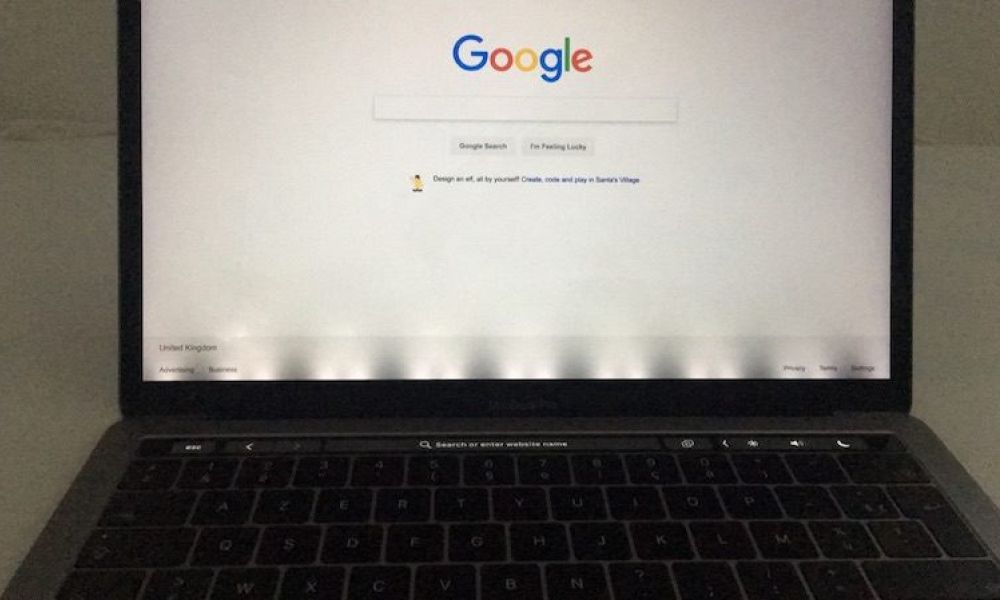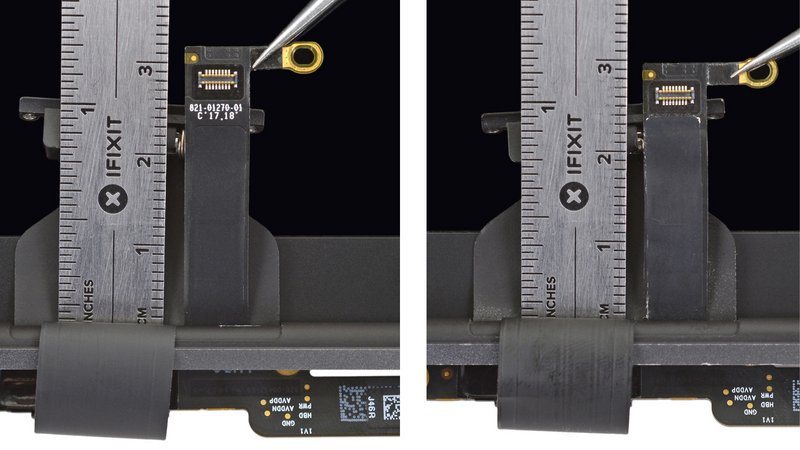Apple Quietly Trying to Fix ‘Flexgate’ Problem on New MacBooks, But Still Won’t Admit It Exists
 Credit: MacRumors Forum / SourceSunTom
Credit: MacRumors Forum / SourceSunTom
Toggle Dark Mode
Over the past couple of years, users of recent MacBook Pro models have been reporting screen problems that crop up after repeated opening and closing of their MacBook lid over time. The problem was dubbed “Flexgate” after the cause was traced to the flex display cables inside the MacBook.
It now appears that even though Apple still refuses to acknowledge the problem exists, the company may have tacitly admitted the issue, quietly taking steps with more recent MacBook Pro models to make sure it doesn’t become a problem.
What’s the problem?
The issue, which appears to affect MacBook Pro models from 2016 onwards, most common affects the display backlight, resulting in an odd “stage light” effect that appears at the bottom of the screen at higher brightness levels. However, users have also reported more serious problems, such as the backlight cutting out entirely if the lid is opened above a certain angle.
A teardown by iFixit identified the cause of the problem as a change Apple made to the type of cable use to connect the display in the lid to the display controller board on the other side of the hinge. The new cable is thin and fragile, undoubtedly as a result of Apple’s attempts to make the MacBook Pro itself even thinner, making it more susceptible to damage from the repeated stress of opening and closing the MacBook lid — especially since the cable itself wraps around the hinge.
To make matters worse, the new flex cables are soldered directly onto the display, meaning the entire screen needs to be replaced in order to fix the problem, turning what could be fixed by a $10 cable into a $700+ repair. So it’s not particularly surprising that Apple has refused to acknowledge the issue or extend its warranty to affected users — despite a petition on Change.org that now has over 13,000 signatures.
What is Apple doing about it?
However, iFixit has discovered that Apple has quietly made a change to the cable in at least some of its 2018 MacBook Pro models. Following up on a report from a MacRumors forum member that their 2018 13-inch MacBook Pro appeared to have a longer cable, iFixit took a look inside its 2018 15-inch model and compared to the cable with the equivalent 2016 model, discovering that it was 2 millimetres longer.
While two millimetres may not sound like much, with the tolerances involved in a MacBook Pro, it can make all of the difference between a cable that fractures and one that continues working properly. Since it’s the tension on the cable that is the most likely cause of the problem, the addition of even a couple of millimetres gives the flex cable enough room to actually flex without coming into contact with pressure from the underlying board.
This is significant because it gives the backlight cable more room to wrap around the board and not come into contact with the board as the laptop is opened past 90 degrees.
Taylor Dixon, teardown engineer at iFixit
iFixit engineer Taylor Dixon notes, however, that it’s unclear if this actually solves the problem, or whether it just buys more time before the cable ultimately still fails. iFixit notes that its team has not yet experienced the problem themselves, and while the new cable provides more breathing room between it and the board, Dixon adds that it’s still in very close contact and therefore it’s “impossible to tell whether it’s rubbing on the board at any point.”
What if my MacBook already has the problem?
Sadly, this fix only helps users of new 2018 MacBook Pro models. If you’ve been considering a new MacBook but have been holding off because of Flexgate, this should ease your fears by making the problem less likely to affect current models, but there are still no guarantees.
Since Apple still refuses to acknowledge this problem, users who have been impacted by this are still stuck with either having to pay to replace their entire MacBook display, or wait in the hopes that Apple does come up with an extended warranty repair program.
That said, the discovery of this change does bring a glimmer of hope that Apple might actually do right by its previous customers and offer no-cost repairs for this who are affected. As iFixit points out, the fact that Apple made changes to the cable suggests that the company knew that this could be a problem even before the public backlash ramped up, and now that this fact is out in the open, there’s going to be even more pressure on Apple to address the issue in a consumer-friendly manner.







